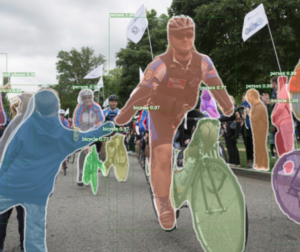
Facebook Releases Vision Platform

An object detection research platform unleashed by Facebook promises to advance computer vision technology.
Facebook launched its Detectron project in July 2016 as a way to create a flexible object detection platform based on Caffe2 deep learning framework. Since then, Facebook researchers have expanded the code base to include algorithms designed to train models for computer vision applications such as distinguishing distinct objects in an image.
Facebook’s AI research team said Monday (Jan. 22) it is releasing Detectron to the open source community as a way of accelerating machine vision research. “With its release, the research community will be able to reproduce our results and have access to the same software platform that [Facebook AI researchers] use every day,” research scientist Ross Girshick noted in a blog post.
Girshick added that the company (NASDAQ: FB) would release performance baselines for more than 70 previously trained models related to instance segmentation and other computer vision applications. Once trained, the models can be deployed in the cloud and mobile devices using the Caffe2 runtime, the researchers said.
Written in Python, Detectron has so far been used for several Facebook projects, including a computer vision and pattern recognition project called Mask R-CNN.
The Detectron code base is available here.
The code release is the latest from machine vision researchers seeking to expand access to machine learning models for data visualization and related applications. For example, Google’s AutoML initiative is part of a push for automated machine learning that allows data scientists to use AI tools to accelerate the process of developing and refining machine learning models.
Google (NASDAQ: GOOGL) investigators recently outlined an effort to scale AutoML from small neural networks to “larger, more challenging datasets,” including ImageNet image classification and an object detection framework called COCO.
They reported that AutoML was able to identify the best layers that worked well with ImageNet classification and COCO object detection. The two layers were then combined to form a new architecture.
Recent items:






























